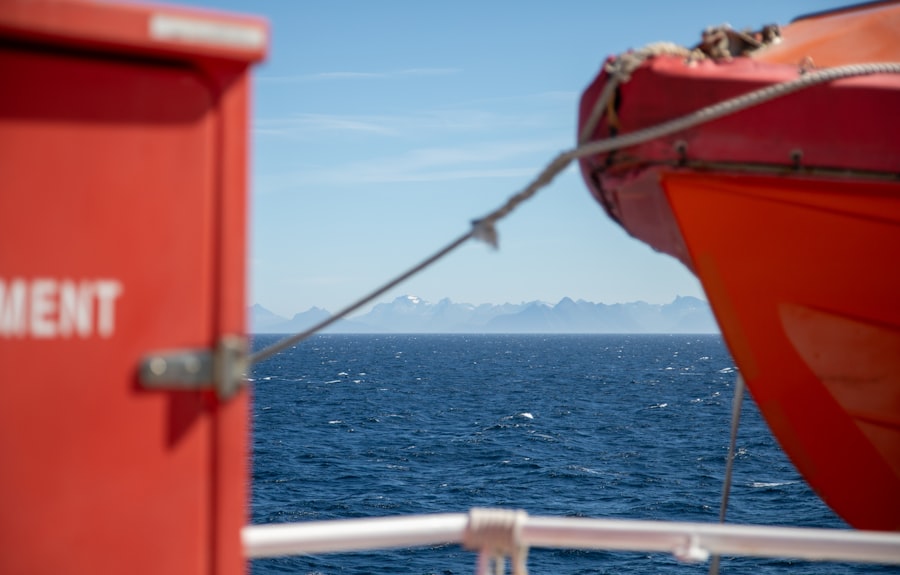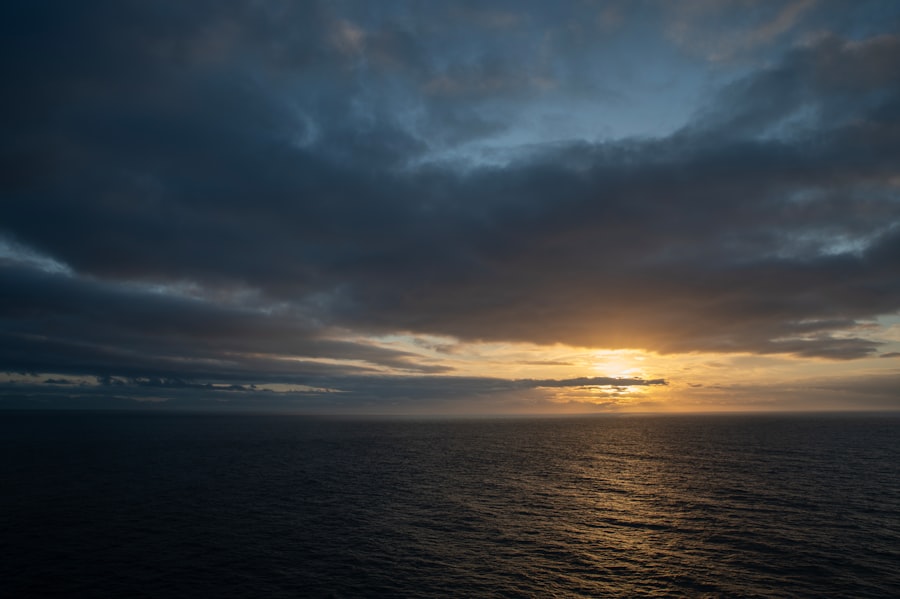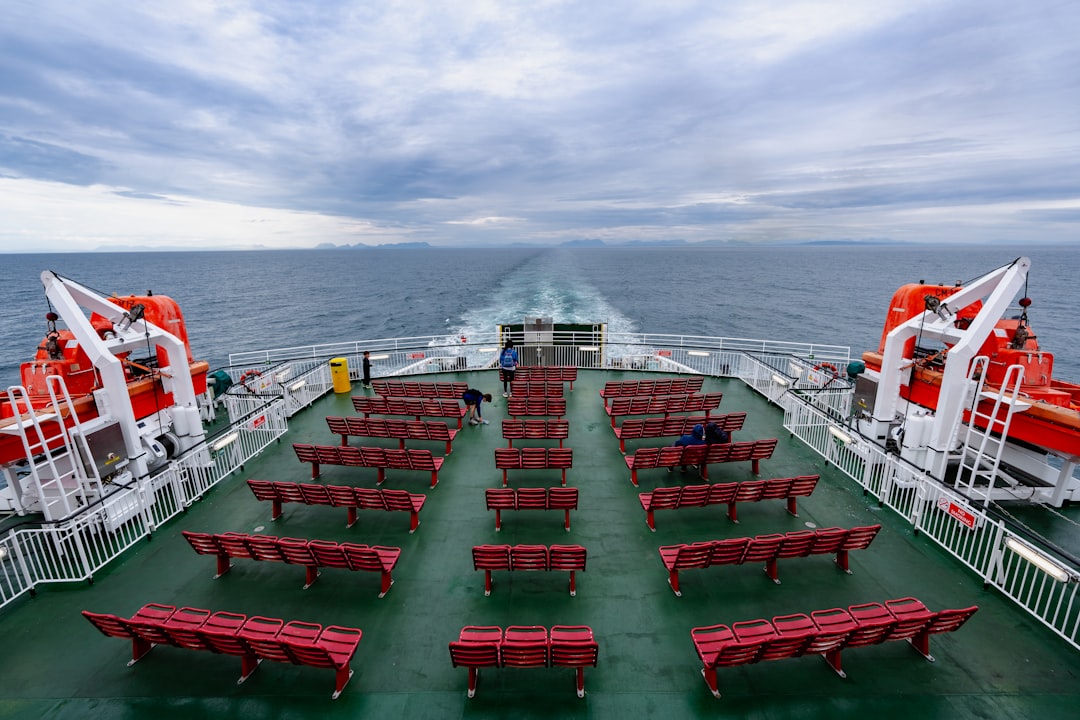The Drake Passage, a body of water situated between the southern tip of South America and Antarctica, is renowned for its tumultuous seas and breathtaking vistas. Named after the English explorer Sir Francis Drake, who navigated these waters in the late 16th century, the passage serves as a critical maritime route for vessels traveling to and from Antarctica. Stretching approximately 600 kilometers (370 miles) wide, it is often regarded as one of the most challenging sea routes in the world due to its unpredictable weather and strong currents.
The passage not only connects the Atlantic and Pacific Oceans but also plays a significant role in global oceanic circulation, making it a vital area for marine research and exploration. For adventurers and nature enthusiasts, crossing the Drake Passage is often seen as a rite of passage. The journey offers a unique opportunity to witness the raw power of nature while traversing a region rich in biodiversity.
From towering icebergs to the chance of spotting whales and seabirds, the passage is a gateway to some of the most pristine environments on Earth. However, it is essential for travelers to be well-informed about the conditions they may encounter, as the Drake Passage can be both awe-inspiring and daunting.
Key Takeaways
- The Drake Passage is a body of water between South America’s Cape Horn and the South Shetland Islands of Antarctica, known for its challenging sailing conditions.
- Weather in the Drake Passage is characterized by strong winds, rough seas, and rapidly changing conditions, making it one of the roughest stretches of water in the world.
- The peak season for crossing the Drake Passage is during the austral summer, from November to March, when the weather is relatively milder and wildlife sightings are abundant.
- The off-peak season for crossing the Drake Passage is during the austral winter, from April to October, when the weather is harsher and the sea conditions are more challenging.
- When crossing the Drake Passage, travelers should consider the best time for wildlife sightings, including the opportunity to see penguins, whales, and seabirds in their natural habitat.
Weather and Climate Patterns in the Drake Passage
The weather in the Drake Passage is notoriously volatile, characterized by rapidly changing conditions that can shift from calm to stormy within a matter of hours. The region experiences a maritime climate influenced by the Southern Ocean, which brings cool temperatures and high humidity. Average temperatures range from -2°C (28°F) in winter to 10°C (50°F) in summer, but wind chill can make it feel significantly colder.
The passage is also known for its fierce winds, which can reach speeds of over 100 kilometers per hour (62 miles per hour), creating challenging sailing conditions. Precipitation is common throughout the year, with rain and snow occurring frequently. The convergence of warm and cold ocean currents in the area contributes to the formation of fog and storms, making navigation tricky.
Mariners must remain vigilant and prepared for sudden weather changes, as these can impact visibility and sea conditions. Understanding these climate patterns is crucial for anyone planning to cross the Drake Passage, as they can significantly affect travel plans and safety.
Peak Season for Crossing the Drake Passage

The peak season for crossing the Drake Passage typically occurs during the austral summer months, from November to March. During this time, travelers are more likely to encounter milder weather conditions, with calmer seas and increased daylight hours. This period coincides with the Antarctic summer, when wildlife is most active, making it an ideal time for expeditions aimed at observing marine life.
Many cruise operators schedule their voyages during these months to take advantage of favorable conditions and maximize wildlife sightings. In addition to better weather, peak season offers travelers a chance to experience the stunning landscapes of Antarctica in all their glory. Icebergs are more likely to be visible, and the chances of spotting seals, penguins, and whales are significantly higher.
However, it is important to note that peak season also means increased demand for trips across the Drake Passage. Travelers should book their excursions well in advance to secure their spots on popular itineraries.
Off-Peak Season for Crossing the Drake Passage
| Metrics | Off-Peak Season |
|---|---|
| Temperature | Cool to Cold |
| Sea Conditions | Calmer |
| Wildlife Sightings | Less frequent |
| Passenger Volume | Lower |
While crossing the Drake Passage during peak season has its advantages, off-peak months—primarily April through October—offer a different experience altogether. During this time, weather conditions can be more unpredictable, with rough seas and colder temperatures being more common. However, for those willing to brave these challenges, off-peak crossings can provide a sense of adventure that is hard to replicate during busier months.
Traveling during off-peak season may also present opportunities for more intimate experiences with nature.
Additionally, some expedition companies offer unique itineraries during this time that focus on specific aspects of Antarctic exploration, such as scientific research or photography workshops.
While off-peak crossings may require more preparation and flexibility regarding weather conditions, they can lead to unforgettable memories for those who seek them.
Considerations for Wildlife Sightings
Wildlife sightings are one of the primary draws for travelers crossing the Drake Passage. The region is home to an array of marine life, including various species of whales, seals, and seabirds. The best time for wildlife observation largely depends on the season and specific species being sought after.
For instance, humpback whales are often spotted during their migration from feeding grounds in Antarctica to breeding areas in warmer waters between June and September. Travelers should also consider the types of excursions offered by different operators when planning their wildlife-focused journeys. Some expeditions may include specialized guides who are knowledgeable about local fauna and can enhance the experience by providing insights into animal behavior and ecology.
Additionally, travelers should be prepared with appropriate gear for wildlife viewing, such as binoculars and cameras with zoom lenses, to capture those once-in-a-lifetime moments.
Safety Considerations for Crossing the Drake Passage

Safety is paramount when crossing the Drake Passage due to its reputation for rough seas and unpredictable weather patterns. Travelers should always prioritize choosing reputable expedition companies that adhere to strict safety protocols and have experienced crews familiar with navigating these challenging waters. It is essential for passengers to pay attention to safety briefings provided by crew members before embarking on their journey.
In addition to selecting a reliable operator, travelers should also consider their own health and preparedness for potential sea sickness. The motion of the ocean can be intense in this region, so it is advisable to bring along seasickness medication or remedies if one is prone to motion sickness. Dressing in layers is also recommended, as temperatures can fluctuate dramatically throughout the day.
By taking these precautions into account, travelers can enhance their safety and comfort while crossing this formidable passage.
Special Events and Expeditions in the Drake Passage
Throughout the year, various special events and expeditions take place in the Drake Passage that cater to different interests and passions. For instance, some operators offer themed voyages focused on photography or wildlife conservation, providing participants with unique opportunities to engage with experts in their fields while exploring this remarkable region. These specialized trips often include workshops or lectures that enhance travelers’ understanding of Antarctic ecosystems.
Additionally, certain expeditions may coincide with significant events such as solar eclipses or unique wildlife migrations. Travelers seeking extraordinary experiences should keep an eye out for these special offerings when planning their crossings. Participating in such events not only enriches one’s journey but also fosters a deeper appreciation for the natural wonders found within the Drake Passage.
Tips for Choosing the Best Time to Cross the Drake Passage
Choosing the best time to cross the Drake Passage involves careful consideration of various factors including personal preferences, wildlife interests, and weather conditions. Travelers should first assess what they hope to achieve during their journey—whether it be witnessing specific wildlife species or simply enjoying calmer seas. Understanding peak versus off-peak seasons can help inform this decision.
It is also beneficial for travelers to stay informed about current weather patterns and forecasts leading up to their trip. Consulting with expedition companies about their experiences during different times of year can provide valuable insights into what one might expect during their crossing. Ultimately, selecting an optimal time requires balancing personal desires with practical considerations related to safety and comfort.
The Impact of Climate Change on Crossing the Drake Passage
Climate change has begun to exert its influence on various aspects of life in the Drake Passage, affecting both marine ecosystems and weather patterns. Rising ocean temperatures have led to shifts in species distribution and altered migration patterns among marine life. This phenomenon poses challenges not only for wildlife but also for those seeking to observe them during crossings.
Moreover, changing weather patterns may result in more extreme conditions within the passage itself. Increased frequency of storms or unpredictable sea states could impact travel plans and safety considerations for those navigating these waters. As awareness of climate change grows among travelers and expedition companies alike, there is an increasing emphasis on sustainable practices aimed at minimizing human impact on this fragile environment.
Personal Experiences and Testimonials
Personal experiences shared by those who have crossed the Drake Passage often highlight both its challenges and rewards. Many travelers recount tales of exhilarating moments spent witnessing breaching whales or navigating through towering icebergs that evoke a sense of wonderment at nature’s grandeur. Others share stories of overcoming seasickness or braving rough waters only to emerge with newfound appreciation for their surroundings.
Testimonials frequently emphasize how crossing this passage serves as a transformative experience that fosters a deeper connection with nature and an understanding of its fragility. For many adventurers, it becomes more than just a journey; it evolves into a profound exploration of self-discovery amid some of Earth’s most awe-inspiring landscapes.
Making the Most of Your Crossing of the Drake Passage
Crossing the Drake Passage represents an extraordinary adventure filled with both challenges and breathtaking beauty. By understanding its weather patterns, wildlife opportunities, safety considerations, and special events, travelers can better prepare themselves for this remarkable journey. Whether one chooses to embark during peak season or off-peak months, each crossing offers unique experiences that contribute to lasting memories.
Ultimately, making the most of a crossing involves embracing both the unpredictability of nature and the thrill of exploration. With careful planning and an open mind, travelers can navigate this iconic passage while forging connections with fellow adventurers and deepening their appreciation for one of Earth’s last great frontiers—the majestic waters of the Drake Passage.
When planning a journey across the Drake Passage, timing is crucial to ensure a smoother and more enjoyable experience. The best time to cross is typically during the Southern Hemisphere’s summer months, from November to March, when the weather is relatively milder and the seas are calmer. For more detailed insights on navigating this challenging stretch of water, you can explore a related article on the topic by visiting mygeoquest.
com/sample-page/’>MyGeoQuest’s sample page. This resource provides valuable information for adventurers looking to make the most of their voyage across one of the world’s most notorious maritime passages.
WATCH NOW! Drake Passage: Earth’s Deadliest Waters Revealed
FAQs
What is the Drake Passage?
The Drake Passage is the body of water between the southern tip of South America and the northern tip of the Antarctic Peninsula. It is known for its rough seas and challenging sailing conditions.
When is the best time to cross the Drake Passage?
The best time to cross the Drake Passage is during the austral summer, which is from November to March. During this time, the weather is relatively milder and the seas are calmer, making for a more comfortable crossing.
What are the weather conditions like in the Drake Passage?
The weather in the Drake Passage can be unpredictable and can change rapidly. It is known for strong winds, rough seas, and the potential for storms. The austral summer offers the best chance for milder weather conditions.
Are there any specific months to avoid crossing the Drake Passage?
The winter months, from April to October, are generally considered to be the worst time to cross the Drake Passage due to the harsh weather conditions, including strong winds and rough seas.
What are the considerations for crossing the Drake Passage?
When planning to cross the Drake Passage, it is important to consider the weather conditions, the experience and expertise of the crew, and the type of vessel being used. It is also advisable to consult with experienced sailors or travel experts for advice.
